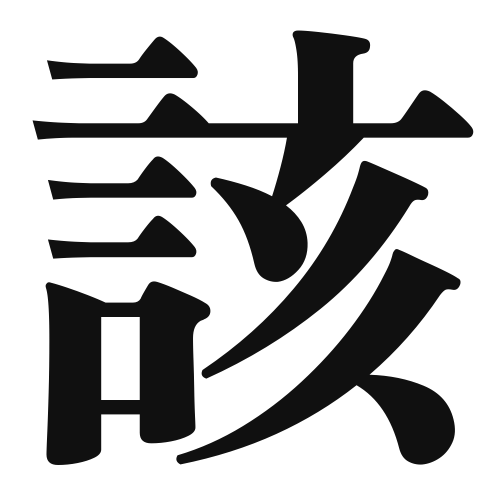1. Overview of Meaning
The kanji “該” (gai) generally means “to correspond to” or “to be related to.” It is often used in contexts where something is being referred to or identified.
2. Formation and Radical
Formation of the Kanji: The kanji “該” is a compound character, which means it is formed by combining different elements. It is classified as a phonetic-ideographic character (形声文字), where the left part (言) relates to speech or words, and the right part (蓋) contributes to the meaning of covering or encompassing.
Radical: The radical of “該” is 言 (gen), which is associated with words and language.
3. Examples of Usage
Common Words and Phrases: Some common phrases that include “該” are “該当” (gaitou – applicable) and “該書” (gaisho – the aforementioned book).
Example Sentences in Daily Conversation:
- この問題は該当する法律に基づいて解決されます。
- (This issue will be resolved based on the applicable law.)
4. Synonyms and Antonyms
Similar Kanji: A similar kanji is “関” (kan), which means “to relate” or “to concern,” but it is often used in a more specific context, such as in “関係” (kankei – relationship).
Opposite Kanji: An antonym could be “無” (mu), which means “none” or “without,” indicating a lack of relation or connection.
5. Cultural and Historical Background
Relation to Japanese Culture: The kanji “該” is often used in legal and formal contexts, reflecting the importance of precise language in Japanese culture.
Proverbs and Idioms: While there may not be specific proverbs that use “該,” it is commonly found in legal documents and formal writings, emphasizing its significance in communication.
